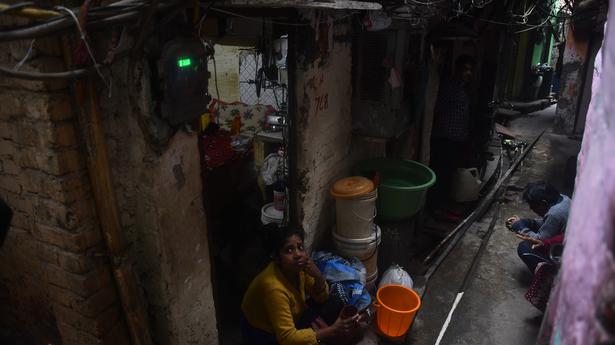
EWS flats’ list dashes many dreams
The Hindu
Residents of Bhoomiheen Camp ‘unhappy’ over not being considered by DDA despite furnishing all documents
Most residents of Bhoomiheen Camp — a jhuggi jhopri cluster — in Kalkaji are disappointed with the Delhi Development Authority’s decision to allot economically weaker section (EWS) flats to 679 households at the agency’s project in A-14, Kalkaji Extension.
The reason for their resentment: only 25% of flats (total 2,700) have been allotted despite the “majority” of them furnishing all necessary documents.
Speaking to The Hindu, some residents said they may never get a flat in the project as their number at the camp is larger than the total houses being allotted by the DDA.
Speaking to The Hindu
According to the DDA, on Tuesday, deficiency letters were issued to the remaining households at the camp, requesting them to submit the documents required to fulfill their eligibility for housing under the agency’s in-situ slum rehabilitation project.
The project is a part of the Pradhan Mantri Awas Yojana (PMAY), which is implemented by the Ministry of Housing and Urban Affairs with the objective of ensuring proper housing to eligible slum dwellers, people from the low, middle-income groups, and EWS.
For Sapan Shah, 59, a resident of the camp, the wait to move into the promised house under the project has remained a distant dream. “I have submitted all the required documents but my name is not there among the 679 households that will receive the allotment letters. I and many others at this camp have been waiting for the allotment of flats for many years. We have only seen delays and false promises,” he said.

 Run 3 Space | Play Space Running Game
Run 3 Space | Play Space Running Game Traffic Jam 3D | Online Racing Game
Traffic Jam 3D | Online Racing Game Duck Hunt | Play Old Classic Game
Duck Hunt | Play Old Classic Game











